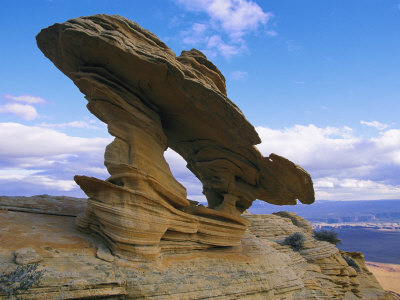- Hydraulic action, Corrasion, Corrosion
- Wave refraction is when waves become more dispersed around waves, making it more concentrated around headlands. When the waves become more concentrated the energy also does, making the waves more powerful in the headlands.
4. Cliffs, rock faces and surfaces
5.Hydraulic action-waves crash against the headlands and trap air in cracks and holes, and is how boreholes are formed.
Corrasion- Waves crash over rock shelves. This action moves rock and other material across the rocks and wears away rock
Corrosion- When waves crash across rocks which have minerals with iron, they wet the rocks and as they dry the salt in the sea water crystallizes and acts on the rock to erode it.
6. The accretion cycle is when big waves and storms wash sand out to sea where it forms sand bars. It then gets washed back to the shore in small quantities by small waves.
7.wind, transportation and erosion
8.Sand is one of the most common things deposited on beaches
9. Wind forms coastal dunes. The wind is blown landwards which gets trapped by low-flying vegetation. The fore dune is sand which has been eroded away. When the vegetation starts dies down, the dunes start to become eroded again and when there has been enough erosion, the vegetation starts to grow again. Then the cycle starts again
10.
The process is started off by waves coming in on an angle. When they break they loose there energy and the water (swash) goes onto the beach. Then gravity pushes the water back down and back into the ocean where it gets hit by another wave and goes back onto the sand, but further down the beach. The process cycles and that's how sand is transported down the beach.
11.
 This is a picture of the twelve apostles which have been eroded away by wind and water over time to cut them off from the mainland and shape them the way they are.
This is a picture of the twelve apostles which have been eroded away by wind and water over time to cut them off from the mainland and shape them the way they are.As with the the the twelve apostles, this rock formation has also been caused by years and years of wind chipping at it and water rubbing it into the smooth shape it is today
This beach has been caused by coastal deposition as the waves and current of other beaches have picked up sand and other materials such as rocks and shells have dragged them over to this beach were it gets pushed up on shore and forms a beach of its own.
As with the beach above, this one has been formed by waves picking up what mostly looks like sand and dirt and spread it over this deposited beach. It doesn't look as rocky and rough as the one above, but it all depends on what the other beaches have to offer.
12. Fore-dune plays a big part of protecting coastal area's, because the dunes which fore-dune make protects the area's from sand and big waves that, without the dunes, could spill into streets and water supplies.
13. a) On the great ocean road
b)Because they have been around thousands of years and have stayed upright (except one) through storms, waves crashing into their sides and constant erosion.
c)Millions of years ago when the cliffs were underwater, marine creatures would die and sink to the bottom. The marine creatures’ skeletons and shells were of course rich in calcium and as the sediment compacted over the centuries, calciferous clay, or tertiary limestone, was formed.
It is the calcium that acts a cementing product, binding the rock together. Thus, where you have a higher calcium content, or a richer deposit of calcium, you have a stronger variety of rock. This stronger rock has managed to withstand the pounding of the waves and the whipping of the sand-laden winds as the weaker rock has been worn away around it, leaving us today with an amazing array of rock formations.
d)The London bridge was a rock sediment in the shape of an arc that connected the mainland to the offshore rocks collapsed in 1990e)Yes, I think the landforms collapsing could have been prevented, but that doesn't mean they should be. Those landforms have been there millions of years and would probably pretty unstable by now, and these things were made naturally, why should we interfere with them so they can live longer. I say let nature run its cause and don't interfere in something to make it last longer when it should die on its own course
14. You may be wondering how these landforms were formed. Yes. Well, millions of years ago these rocks were underwater, completely submerged. With them were there sea creature friends, fish, seaweed, sharks. When there friends died, there bones would be left behind. These bones were rich in calcium and that calcium that was left behind helped to stick rocks together. Over time, these once small rock began to grow and grow and became stronger and stronger from all the calcium form the dead fish and animals. Then when the sea water fell dramatically, these rocks were left standing. But they are dying. With all the constant erosion from wind and water, these landforms are loosing strength and will, in time, collapse under the weight and fall.











